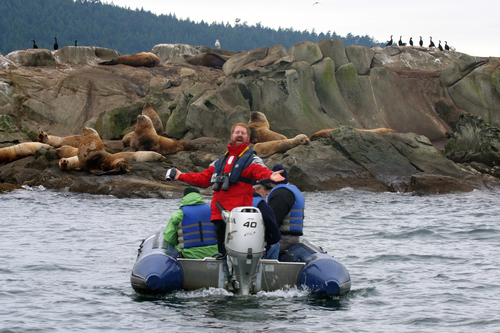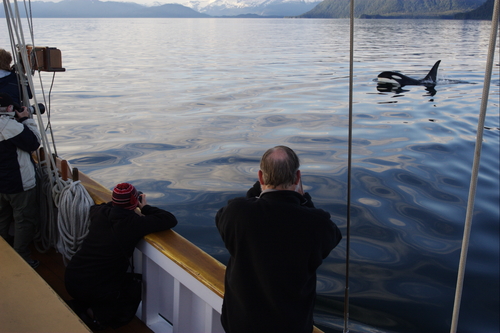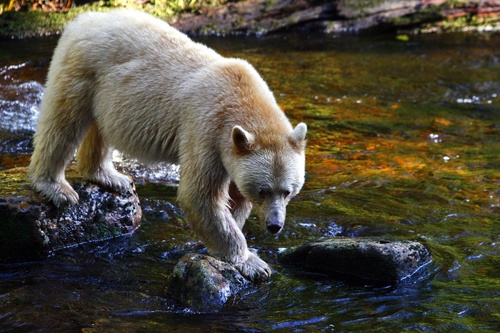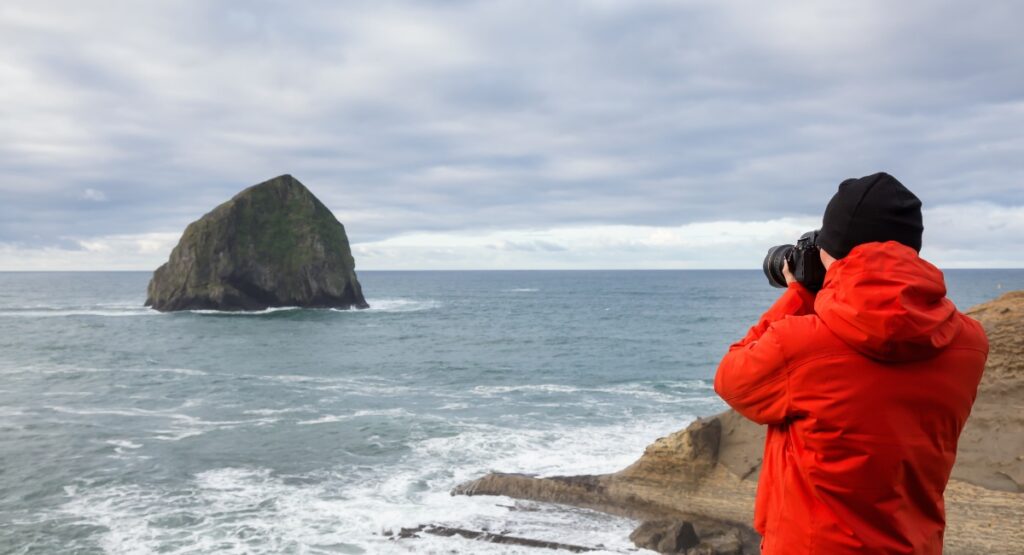Ecotourism Before Ecotourism Was Cool
Ecotourism Before Ecotourism Was Cool
September 19, 2014
Interview with Kevin Smith, Captain of the Maple Leaf
By Paula von Weller
Based in beautiful British Columbia, Maple Leaf Adventures offers wildlife and cultural sailing adventures aboard a 92-foot, classic sailing ship in the company of expert naturalists. Maple Leaf Adventures has received numerous awards and accolades such as National Geographic Travelers “50 Tours of a Lifetime”, Frommer’s “Canada’s 6 Best Travel Experiences”, and was recently named a finalist for Parks Canada’s National Sustainable Tourism Award.
Apart from their sailing cruises, what makes them different is their dedication to supporting efforts to protect this region’s incredible natural resources. From supporting and working with conservation organizations to advocating for environmental protection and educating clients about how to help, Maple Leaf Adventures goes beyond traditional ecotourism. SEEtheWILD’s Paula von Weller recently spoke to the company’s president, Kevin Smith. What kind of traveler does Maple Leaf Adventures attract?
We attract adventurous spirits, people that are willing to look at their precious holiday time and say “yeah, I’d like to go to some place that’s maybe a little bit off the map and isn’t Disneyland or a Carnival cruise.” That means that right away when you get onboard you’re with a bunch of like-minded people that are up for an adventure. They understand that it might rain on them (because we’re in a rainforest after all) and that wildlife is not on a schedule or in any way contained like in a zoo and don’t perform on cue. If the Maple Leaf is able to get us out there in the best possible places then the likelihood is, if we keep our eyes open, we’re going to see what we came for.


What’s your most popular trip?
Probably our Great Bear Rainforest trip. It’s the area that MLA pioneered travel into. Nobody was doing trips there before we started going there and most of the area wasn’t protected. We began taking lots of media in to say “hey look, this is really important up here and deserves protection”. I volunteered 5 years of my life to work on the land use planning for that area and we managed to get about 35 percent of the area tied up as a new conservation area. I did that because I’m an environmentalist and conservationist first and a business owner second.
Tell me about your involvement with the Raincoast Conservation Foundation’s bear monitoring?
Unfortunately Raincoast is doing the work that our government probably has a responsibility to do but hasn’t been, or can’t do properly. We’re tied to the hip these days and I have so much respect for the work that the organization does. They investigate and inform and inspire people. Being involved with them and the lead scientists doing their bear work is wonderful because we’re helping them with whatever small amount we can by reporting sightings, and they’re able to tell us the latest genetic information about the bears that they’re getting samples from, and what that means about the lives of the bears we know and see.

On our tours, people understand the tie in between what we do and how we protect these areas and the truth is, people fall in love with these areas that they travel to with us. They fall deeply in love because they have an understanding of it at a deep level and the natural thing for all of our guests is to ask in the last couple of days of the trip “what can we do to help this area?”.
And then we introduce them to the scientists and the conservation organizations that are doing the work here because they need help, letters need to be written, etc. In our case we can point to all kinds of really beautiful, big successes – new protected areas that we’ve absolutely been a part of. I’ve had the honor of actually drawing the lines of the map of costal British Columbia of brand new protected areas. That’s my line and I made it as big as possible!
Many people have never heard of a Spirit Bear. Can you tell me a little about them?

People haven’t heard of them because they’re only in one part of the world and that’s right here on the BC coast. They are more rare than any bear on the planet, more rare than a panda and other small bears. The Spirit Bears are a white phase of the black bear; they are very distinct, they look completely different from all the other black and brown bears, they really stand out against all the dark greens of the forest so they sort of suddenly appear out of the forest edge to catch a fish then they quickly go back into the forest.
The First Nations elders told all of the communities not to tell anyone about the Spirit Bear because they knew that the Europeans that were coming to the coast for the last couple hundred years would very likely want to have one of these rare bears as a trophy and they didn’t want to be any part of that at all. They had no tradition of hunting or eating bears and they lived with great reverence and respect for the bears.
It’s only fairly recently that the Spirit Bear has been sort of championed by the BC government to become an emblem of the wildlife here and the pristine forests and wilderness, and fortunately now there’s a complete and total ban on any hunting of the Spirit Bar which is important. We’re always educating our guests and the wider population about these issues because we come up against it.
The mystery is why they evolved here. It’s thought they may have an advantage in catching salmon in the daytime over darker bears.
Can you tell me about your role in developing First Nations tourism in Canada?
It’s important to know that these communities are developing tourism themselves; it’s not paternalistic. What we provide is experience, long-term examples, recognition of their traditional territory, and economic benefits to the local communities from sustainable tourism that recognizes the economic value of conservation. This is in keeping with many First Nations ethics.
More than 10 years ago I worked to bridge the gap between non-First Nations-owned businesses like MLA going into First Nations traditional territory. Ours was the first company to set up protocol agreements with First Nations and we have several of those in place now and several we’re working on. These protocol agreements are legal mechanisms to show respect of traditional territory (land claims are unsettled here), agree on our values and how we work together, and recognize some but not all of the economic benefits. So now we travel into their territories with added mutual respect and it’s been copied and followed by other tour operators.
By our own planning, we leave significant resources behind in these communities. Our dollars fund watchman programs so they (First Nations) can go out and actually make sure poachers are not illegally hunting these bears in the area, for example. That’s in everyone’s best interest and it’s totally appropriate that the First Nations are getting the training to go out and do that work and keep an eye on the resources in their territory.



